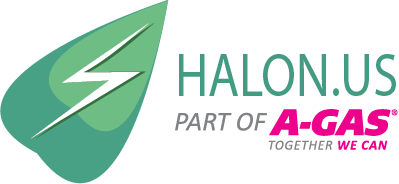16 Jun 3 Reasons Why Halon 1301 is No Longer on the Market for Fire Suppression
 Throughout the 60s, 70s, and 80s, Halon was the most popular fire suppression product to consider. Be it offshore or onshore, Halon 1301 was the norm, offering relatively inexpensive and highly efficient solution to everyone’s firefighting needs. However, this changed when Montreal Protocol entered into force due to the growing awareness of the depletion of the ozone layer and its concerns relating the environment. The Montreal Protocol struck a fatal blow to Halon production because of the same concern and its days have been numbered ever since. Halon 1301 is no longer available on the market for fire suppression and there are a few reasons behind it.
Throughout the 60s, 70s, and 80s, Halon was the most popular fire suppression product to consider. Be it offshore or onshore, Halon 1301 was the norm, offering relatively inexpensive and highly efficient solution to everyone’s firefighting needs. However, this changed when Montreal Protocol entered into force due to the growing awareness of the depletion of the ozone layer and its concerns relating the environment. The Montreal Protocol struck a fatal blow to Halon production because of the same concern and its days have been numbered ever since. Halon 1301 is no longer available on the market for fire suppression and there are a few reasons behind it.
Following are 3 reasons why Halon 1301 is no longer on the market for fire suppression:
1. Ozone Depletion
This is the primary reason why you cannot find Halon 1301 on the market for fire suppression. Even though the manufacturing of Halon was globally banned, its use is not banned and those who still have it can use it as a fire suppressant under Montreal Protocol guidelines. The only sources of supply are recycled Halon and inventories. It’s common use today is in the armed forces, civil aircraft, and the emergency services. In 1987, the Montreal Protocol discovered that Halon was depleting the ozone layer and hence damaging the environment. The production of new Halon was ceased in 1994.
In 1994, the initial agreement reduced the consumption and production of many kinds of CFCs and Halons to 80% of 1986 levels and then reduced it even further to 50% in 1999. Today, while the new production is completely banned, Halon still exists in older systems and recycled for critical users.
2. Health Hazards
Even though the primary cause behind Halon ban was the increasing ozone depletion concerns, it’s health hazards were also a key factor. While Halons are chemically stable, low-toxicity compounds, they have a few drawbacks. Halon has low toxicity but it is not entirely non-toxic and benign and you wouldn’t want to introduce it to your respiratory system. So, ventilating the space as quickly as possible is recommended when Halon is sprayed to fight fire.
Apart from this, there are other health hazards that Halon fire extinguishers pose to the human body. Exposure to Halon can cause irregular heartbeats, irritation of the skin or eyes, dizziness, frost bite, and suffocation.
3. Lack of Available Service
Just like most other types of safety equipment and instruments, fire extinguishers also require regular service. Without proper service, there is a risk that the fire extinguisher will not operate correctly when required. Since the production of Halon 1301 was ceased, companies are now more focused on disposal and recycling of Halon and there is a lack of available service when it comes to Halon fire extinguishers. As a result, the only Halon you see is available for disposal and recycling and not for use as a fire extinguisher.
The reasons that led to Halon 1301 production ban created the need to manufacture environmentally friendly fire suppression agents. And although there are certain agents that meet the criteria, an adequate Halon replacement has yet to be found.
Halon.us is a Halon buying agency, that pays top dollar for Halon 1301, Halon 1211, and FM200, which we purchase for essential uses such as aircraft fire safety systems, in accordance with all applicable environmental regulations. We are known and trusted for being reliable, trustworthy, and making super fast payments. We make all transactions simple and convenient, taking a lot of the work and expenses off of your hands. If you are looking to sell Halon, contact us to see why we are America’s most trusted Halon buying agency. Call (866) 720-5681 today!

Sorry, the comment form is closed at this time.